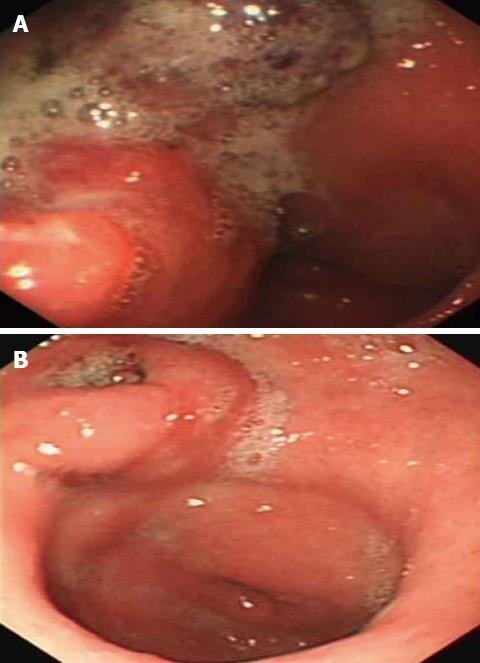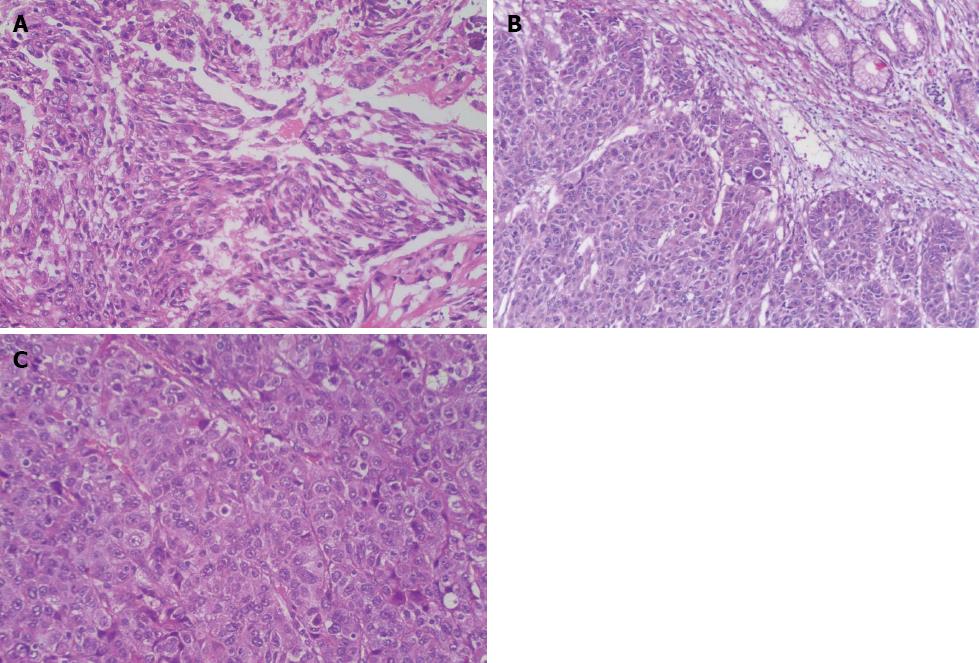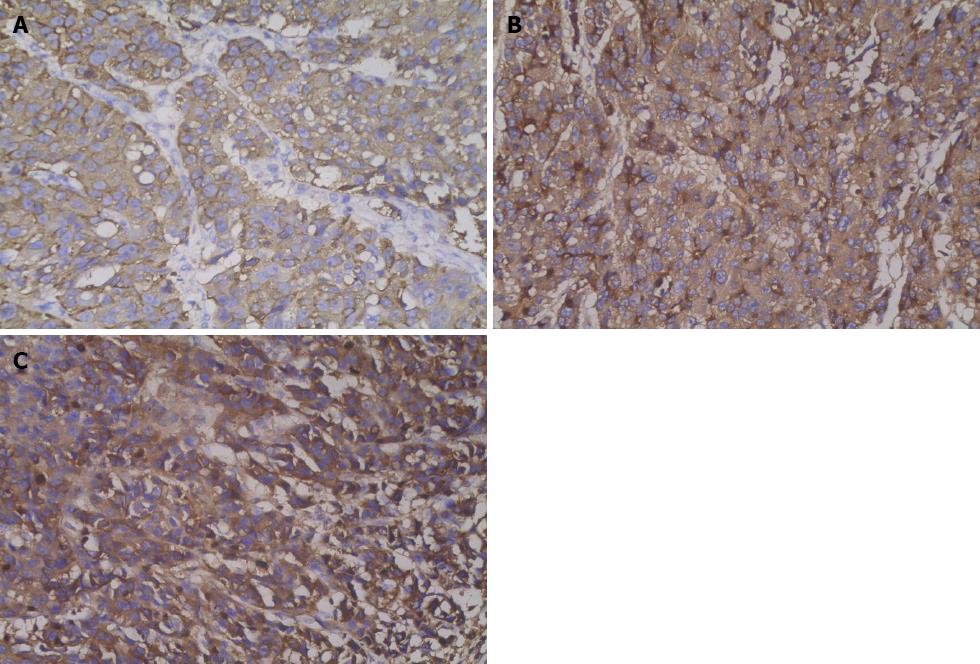Copyright
©2013 Baishideng Publishing Group Co.
World J Gastroenterol. Jul 21, 2013; 19(27): 4437-4442
Published online Jul 21, 2013. doi: 10.3748/wjg.v19.i27.4437
Published online Jul 21, 2013. doi: 10.3748/wjg.v19.i27.4437
Figure 1 Endoscopic imaging of the gastric tumor.
A: A gigantic mass with a central ulceration at the lesser curvature extending from the angle to antrum of the stomach; B: Partial remission of the gastric tumor after chemotherapy.
Figure 2 Computed tomography imaging of the gastric tumor and liver metastatic tumor.
A and B: Computed tomography-scan revealing thickening of the wall of antrum, enlarged lymph nodes at the lesser curvature, multiple hepatic tumors in the bilateral lobes of the liver, tumor thrombus in the portal vein and its branches; C and D: After comprehensive therapies, enlarged lymph nodes had decreased in size and the liver metastatic foci were stable.
Figure 3 Presentations of hematoxylin and eosin stains: A: Tumor cells are arranged in a trabecular pattern (× 200); B: Tumor cells are arranged with cancer nests and adenoids (× 100); C: Tumor cells are featured with eosinophilic cytoplasm and round nuclei occasionally exhibiting obvious nucleoli (× 200).
Figure 4 Presentations of immunohistochemical stains: A: Positively-stained alpha fetoprotein (× 200); B: Positively-stained alpha-1 antitrypsin (× 200); C: Positively-stained alpha-1 antichymotrypsin (× 200).
- Citation: Ye MF, Tao F, Liu F, Sun AJ. Hepatoid adenocarcinoma of the stomach: A report of three cases. World J Gastroenterol 2013; 19(27): 4437-4442
- URL: https://www.wjgnet.com/1007-9327/full/v19/i27/4437.htm
- DOI: https://dx.doi.org/10.3748/wjg.v19.i27.4437












